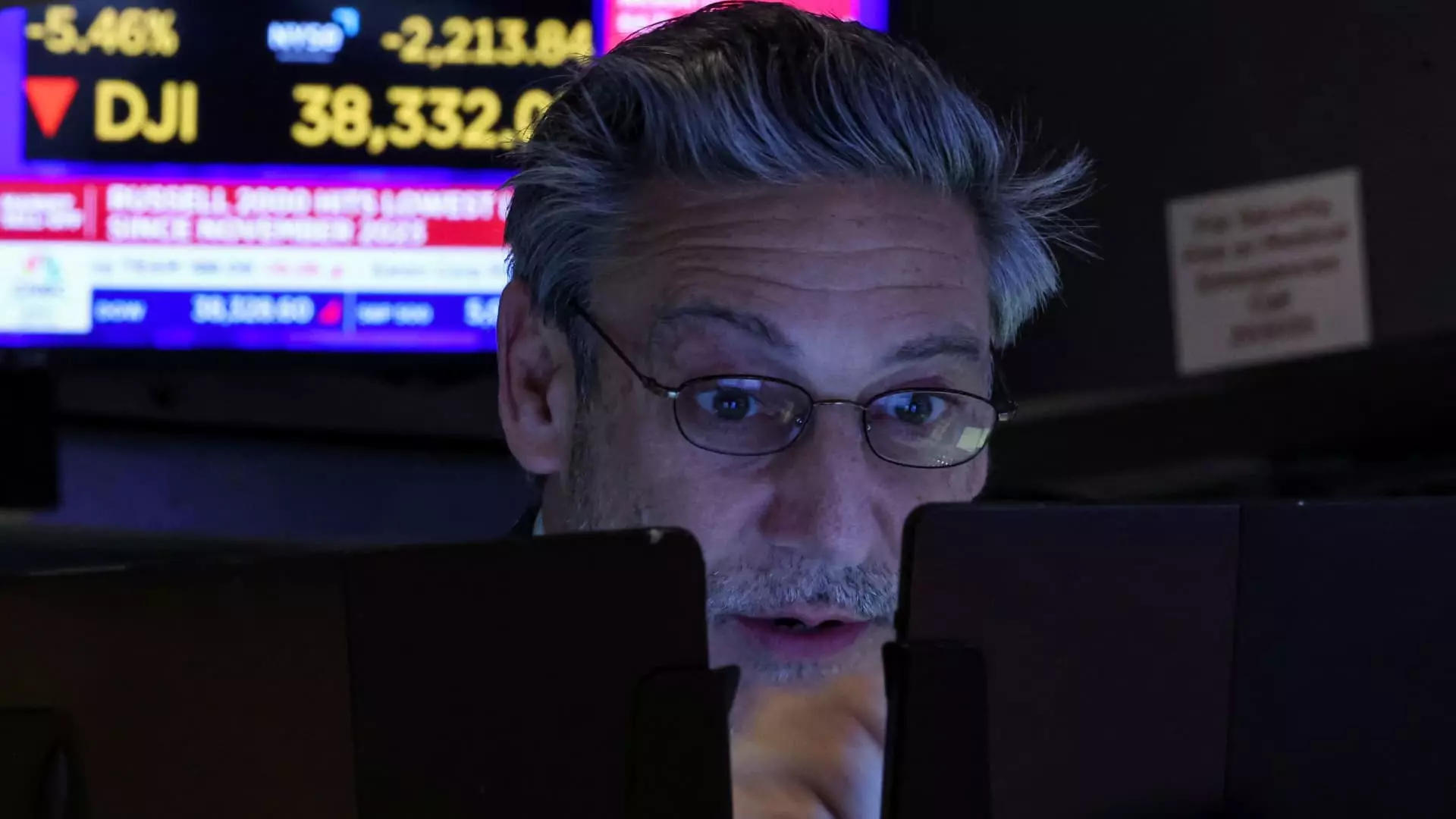The stock market’s volatility can feel like a roller coaster, with its sharp peaks and troughs sending investors into a frenzy. This chaos often leads to trading halts, which serve as emergency brakes on a potentially disastrous market crash. As unnerving as it may be, these pauses are not arbitrary; they are implemented strategically to give traders a moment to recalibrate their decisions. This is especially crucial during periods of unprecedented turmoil, like the Covid-19 pandemic or the recent tumult stemming from President Trump’s trade policies. However, one must question whether these halts actually serve their purpose or merely delay the inevitable.
Trading halts arise during extreme conditions, such as when the S&P 500 falls 7% overnight. The halt is meant to create a space for rational thinking in an otherwise chaotic environment. The idea sounds admirable — a safety net for investors. But one can argue that these interruptions may also serve as artificial restorers of confidence. This leads to the question: Are we inadvertently encouraging reckless investor behavior because traders think they have a safeguard? Each trading halt sends a dual message: the market is fragile, yet we can always come back, right?
The Impact of Global Trade Tensions
Trade wars, particularly those initiated by unilateral tariffs, can set off a ripple effect across global markets, affecting not just financial indices but also public sentiment. The recent conflict instigated by increased tariffs from the Trump administration has been a flashpoint. As equities face relentless selling pressure, it becomes abundantly clear that investors are struggling under the weight of uncertainty. How long can we ride this wave of turmoil without a serious reckoning?
Far too often, the media paints a rosy picture of the stock market’s resilience, overlooking the cracks in its foundation. The truth is, when traders are living in a persistent state of fear due to international strife, the market’s natural mechanisms are thrown off balance. The fact that trading halts become a necessary tool in these times indicates that we are sitting on a powder keg. The question is whether we have the foresight and responsibility to manage the risks involved, or are we merely reacting to the crisis of the moment?
Circuit Breakers: A Double-Edged Sword
The circuit breaker system is a substantial pillar of the trading infrastructure meant to prevent market freefalls. However, this mechanism is not without its flaws. Is it fair to suspend trading mid-session, while everyday investors sit on the sidelines, left pondering the fate of their portfolios? When the S&P 500 takes a plunge and triggers one of these breaks, it reveals an unsettling truth: investors are deeply uneasy, and the system itself is put under scrutiny.
The levels of circuit breakers — Level 1 at a 7% drop, Level 2 at 13%, and Level 3 at 20% — may sound sound quantitatively reasonable, but they also illustrate a world increasingly disconnected from the reality of everyday Americans. After all, when the market tumbles, it doesn’t just affect wealth; it impacts jobs, community resources, and the broader economy. When trading halts occur, we must ask: what signals does it send to those who are not actively involved in the stock market and whose livelihoods are painfully tethered to it?
The Psychological Toll on Investors
The psychological impact of trading halts should not be underestimated. For many individual investors, a market downturn can feel catastrophic, particularly when unanticipated halts add a layer of confusion. When the markets face sudden pauses, it creates an environment rife with anxiety and speculation. Is this just a momentary dip, or are we staring down a market crash?
This relentless uncertainty feeds into the culture of panic selling, where fear overtakes informed decision-making. When the Nasdaq Composite plunged over 20%, it wasn’t just numbers being affected; people’s confidence in their investments eroded instantly. The psychological components of such stress should be considered when evaluating the efficacy of trading halts. Are we providing safety or merely exacerbating emotional turmoil?
Revisiting the Role of Investors
In light of these challenges, we must revisit the role investors play in this chaotic system. Financial literacy has never been more critical, especially amid a backdrop of misinformation and emotional decision-making. Empowering investors with knowledge about market dynamics, including the implications of trading halts and circuit breakers, could foster a more resilient investor community.
Moreover, we must advocate for a richer dialogue around the ethical obligations of market regulators. Are we being preemptively protective, or are we prioritizing market stability at the cost of real economic health? With a lively political landscape, these considerations should not merely reside in the annals of scholarly research but rather be a rallying call for actionable change.
While trading halts and circuit breakers serve as crucial tools for managing market volatility, they also unveil a host of critical issues that must be confronted head-on. The ongoing interplay between policy, market forces, and investor psychology deserves a more exhaustive examination than it has received.

